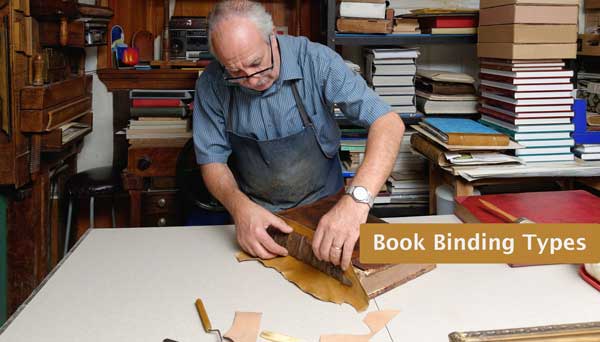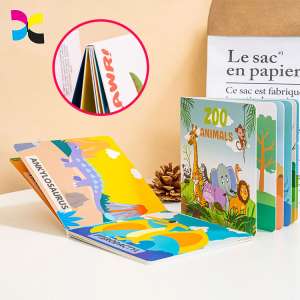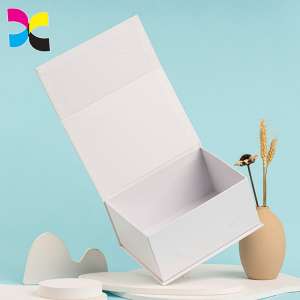You don’t have to be a bookworm to notice the various bookbinding styles available nowadays. Each one is so unique at its own style that you’ll find them flaunting before your eyes.
Especially if you have an interest in DIY projects, you can find out many exciting ways to make your own unique notebook with these styles!
With that theme in mind, we are here to discuss twelve different types of book binding which will surely give you a lot to explore! We will go from the most basic styles to the rarest ones so that you have plenty to choose from in the end.
So let the exploration begin!
12 Different Book Binding Types
1. Case Binding
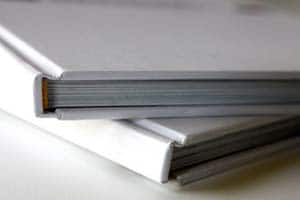
Many of the book-lovers prefer hardcover over other options because of its higher durability. This variation of a book’s exterior is officially known as case binding. In this process, the pages are first arranged according to their signatures and then sewn together in that particular order.
The cover can be made with a range of materials including vinyl, cloth and leather. Endpapers treated with glue are used to attach these covers to the main book. Usually, a casebound book also comes with a slipcase so that you can keep it safe from breaking up and forming dust over time. As a result, it lasts for a long time!
Along with such impressive durability, case binding also allows more room for creativity since the covers and cases can bear beautiful intricate handwork. So you can marvel at the beautiful design even before opening up the book.
Pros:
- Highly durable
- Variety of cover materials
- Impressive aesthetics
Cons:
- Highly expensive
- Usually heavyweight
2. Perfect Binding
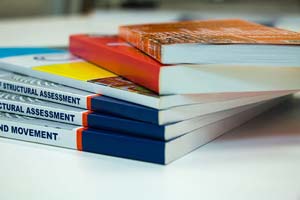
Because of this requirement of the edges being perfect, this kind of binding has been named “perfect binding”. Even though the fringes seem impeccable in these books, the cover is usually very soft. As a result, you cannot rely on it to last a long time unless the book is stored properly.
Without careful handling, these books will soon display crooked portions in the cover and even torn parts in extreme cases.
Therefore, a good idea to extend its durability is laminating the book. In this way, you don’t have to deal with fragile binding and keep the expense low at the same time!
However, if you are planning to keep the book flat open in front of you while reading, this binding does not allow it. You have to either hold it in hand or use paperweights on both pages to read comfortably.
Pros:
- Perfect trimmed edges
- Beautiful presentation
- Affordable
Cons:
- Low durability
- Uncomfortable reading
3. Saddle Stitch Binding
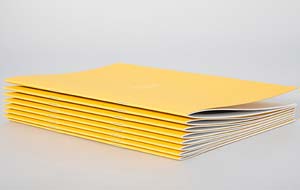
If you are fond of taking notes on different topics of interest, you must have come across the saddle stitch binding. Among all the commercial bookbinding methods, it is considered to be the second most popular one.
These are comparatively much thinner than the previous two binding types we discussed. That is because you cannot make it thicker than the amount your staples allow. As a result, the number of pages needs to be limited as per the staple’s capability.
In saddle stitch, the pages are basically bound together using staples or threads. As a result, the notebooks can be made faster and be available at very affordable price points. So if you are looking for notebooks on a budget, these can be a very viable option.
Pros:
- Simple to make
- Very affordable
- Perfect for school use
- Ideal for booklets
Cons:
- Limited thickness
- Prone to tearing up
4. Comb Binding
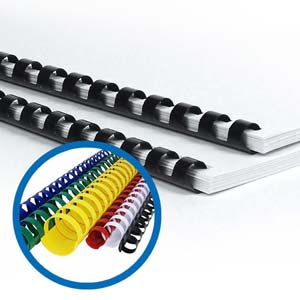
Comb binding is one of the most flexible options out there for books and notepads. If you have any binding machine then you can do it very easily at home.
This binding allows you to open up the pad in several ways, fold it full 360-degree or lay it flat on the surface! So you can have much more freedom than traditional case-bound, stitched or stapled books.
The spine of these books is made of circular plastic rings which can vary between 19 and 21 in number, depending on the paper size. Then a hole puncher creates the necessary rectangular holes in the document papers where these rings pass. As a result, you can adjust the folding position for maximum comfort.
Other names for comb binding include cerlox and surelox. There are many sizes of spines available in the market with the capacity to hold 16 to 425 pages at once.
You can customize these aspects like the sizes of plastic rings, papers and spines according to your requirements. Moreover, you can adjust them later as well.
Pros:
- Flexible handling
- Varieties of sizes
- Adjustable
Cons:
- Not accepted by retailers
- Display of amateur publication
5. Spiral Binding
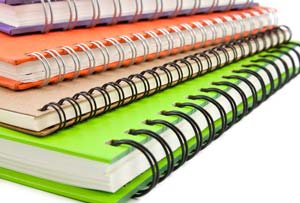
This is very similar to the comb binding type. Only this time, the spirals use helical coils instead of plastic rings to keep the papers attached to the spine. It is known in many other names like wire binding, spiral coil, plastic coil and color coil.
Like the previous variation, you can have full freedom of rotating the pages in this binding as well. So you can feel comfortable while taking notes in class or while going through them later.
These books or spiral notebooks allow you to spread the bound document fully flat to make the reading experience easier.
They apparently come in a much wider variety of sizes and colors compared to other binding styles. Along with their high flexibility, you can get them at very economical prices and continue using each one for a long time.
Pros:
- Flexible handling
- Low-cost production
- Available in versatile sizes and colors
- More durable than many binding styles
Cons:
- Makes the impression of a self-publisher
- Not a good choice for official documentations
6. Thermal Binding
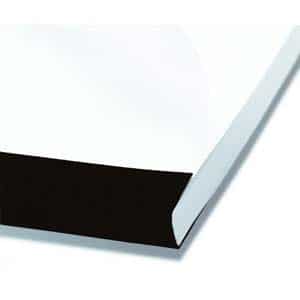
As the name suggests, thermal binding relies on heat to put the pages together with the spine. It is one of the more efficient ways to bind up a book since thermal binding requires less effort and time. Along with these conveniences, it manages to deliver quite a polished appearance for professional documents.
To bind a book thermally, the spine of its cover must be treated with glue first. Then just insert the document or pages inside it and carefully transfer the entire thing in a thermal binding machine. This is what heats up the glue and attaches the papers with it.
As soon as its done, the machine notifies you with a sound. Just set the bound document aside so that it can cool down. After a few minutes, you can store it safely on the shelf or use it immediately.
Pros:
- Efficient method
- Polished appearance
- No need to punch the paper
Cons:
- Can loosen up faster than others
- Limited flexibility
- Expensive machines
7. Section-Sewn Binding
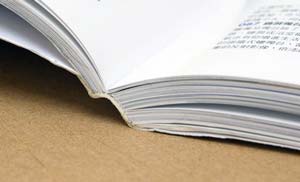
The pretty self-explanatory variation of bookbinding relies on separating all the pages into several sections or signatures. Each of them is sewn up individually first. Then they are sewn into their following section to maintain the proper sequence. As a result, it creates a strong bond throughout the entire book.
To enhance their strength, glue is applied to the spine and a durable cover is attached. Because of this whole system, section-sewn binding is a very reliable option for those large and heavy documents which need to last for years. Besides, you can read such a book comfortably since it lays flat on the surface.
Section-sewn or thread binding is mostly used for heavyweight books like classic fiction series, encyclopedia and religious books. It is a great choice for illustrations, art books and catalogs as well. Another name for this kind of binding is Coptic since early Christians followed this method for their bibles.
Pros:
- Can hold a high number of pages
- Highly durable
- Comfortable reading
Cons:
- Takes time to complete
- More expensive
8. Cased-in Wiro Binding
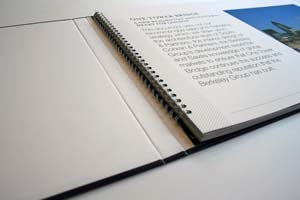
You can think of this as an evolved version of the spiral or wire binding. These notebooks are made pretty much the same way as the wire except that you can keep the coil hidden here. As a result, you can enjoy the benefits of a polished look without compromising its high flexibility.
In this binding, the coiled wire is hidden by a sturdy case. The document can be attached to the spine using glue. Alternatively, you can insert its first and last pages into the corresponding covers. There will be many options for you to choose from in terms of sizes and colors.
Pros:
- Professional look
- Sturdy case provides higher durability
- Customizable size and colors
Cons:
- Less flexible than spiral binding
- Slightly high price
9. Pamphlet Binding
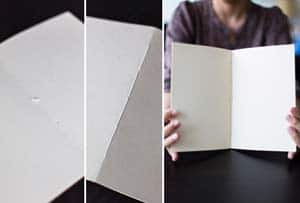
This kind of binding shares many features with the saddle-stitch variation. However, the pamphlet provides a more elegant finish and appearance for thin books or booklets than saddle-stitch.
In this method, you will need the pages correctly printed to maintain the proper sequence. It is a little different since you have to fold them in half. So one page will essentially lead to two leaves and four pages. Then they will be stitched together accordingly.
Pros:
- Simple method
- Elegant finish
- Economical cost
Cons:
- Leaves room for error in sequence
- Limited number of pages allowed
10. Japanese Bookbinding
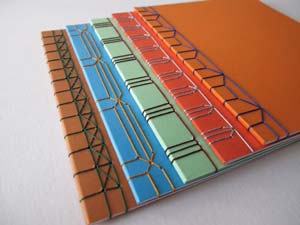
If you are looking for something uncommon to bind up a unique notebook, the Japanese way of bookbinding can be a great way to go. However, this method will surely take up a lot of time!
So be sure that you are okay with holding patience for a long time in order to make these lovely notebooks flawless!
There is no section or signatures involved here. You will be working with the loose sheets of paper arranged in a stack. So you can include different colors and prints to make the notebook unique. The binding is made through four holes which will function as the sewing stations.
Pros:
- Goes with soft or hard cover
- Versatile pages allowed
- Perfect for aesthetic decorations
Cons:
- Easy to repair
- Time-consuming method
11. Screw-Post Binding
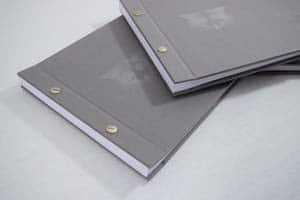
Have you ever thought of including screws in a bookbinding project?
If not, get ready to try out something quite fun and innovative!
However, we must warn you, it will require a lot of materials. Although they will not cost more than a hundred bucks at most.
So start to gather bookbinding boards, screw posts, sheets of inside cover paper, linen tape, book cloth, PVA glue, wax paper and scrap paper.
Besides, a ruler, pencil, awl, utility knife and more usual tools will be necessary for the binding. Remember that the methylcellulose glue may need to sit overnight.
Now make the required marks on your papers and start drilling holes for the screws. Cut the spines and cover boards accordingly to attach the linen tape. When the glue is ready, apply it to join hinged covers and book cloth.
Pros:
- Ideal for portfolios
- Pages can be added or removed later
- Professional look
Cons:
- Time-consuming elaborate process
- Requires lots of materials
12. 3-hole Punch Binding

This is one of the easiest bookbinding methods you will ever come across. All it demands is just punching three holes in the paper edges so that you can insert the three rings in place.
If you are passing some lazy times and want to breathe new life into your notebook collection, you can try this easily.
It is a popular choice for binding textbooks since the process is so simple, efficient and cost-effective. However, they may not be so durable as other alternatives. Here our list of best 3 ring binders.
Pros:
- Simple process
- Cost-effective
- Popular for textbooks
Cons:
- Low durability
- No polished look
Start Binding Now!
As you can see, there is a whole world of bookbinding styles outside the basic categories of hardcover and softcover! There are even some ideas to try out from other cultures around the planet!
Depending on the available materials, aesthetics, uses and durability requirements, you can figure out which one would be the best for you from these different types of book binding styles.
来源:polaroidfotobar
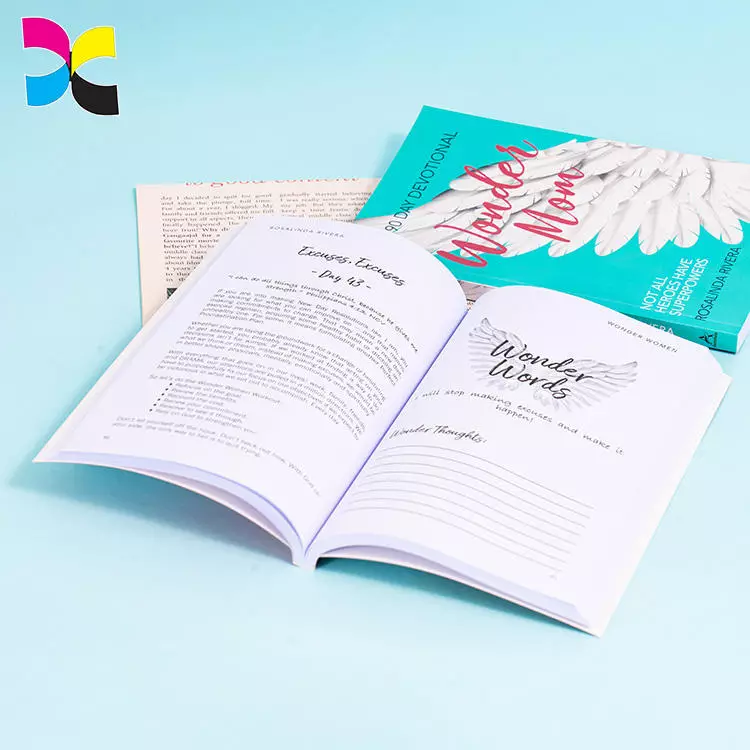
Paperback Workbooks Perfect binding
Custom Paperback Book Workbook Best Binding and Printing

